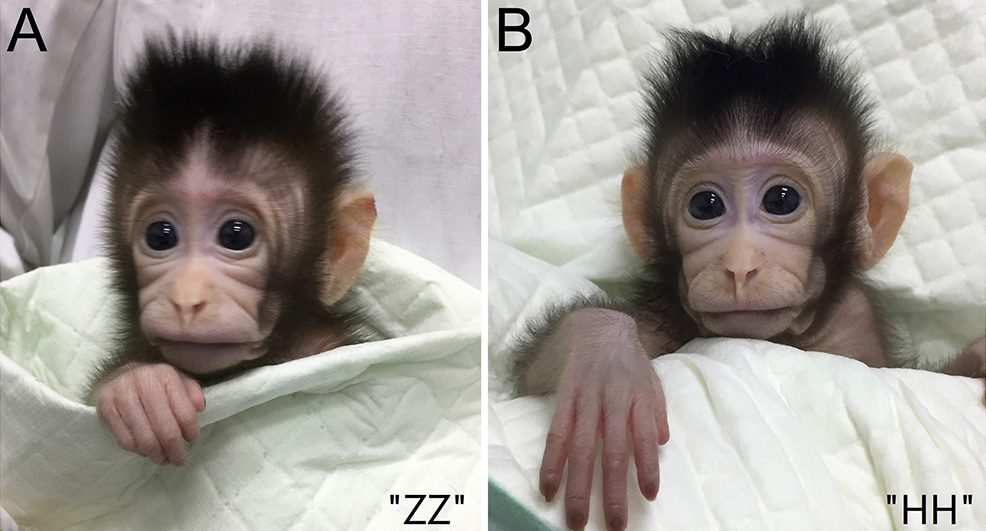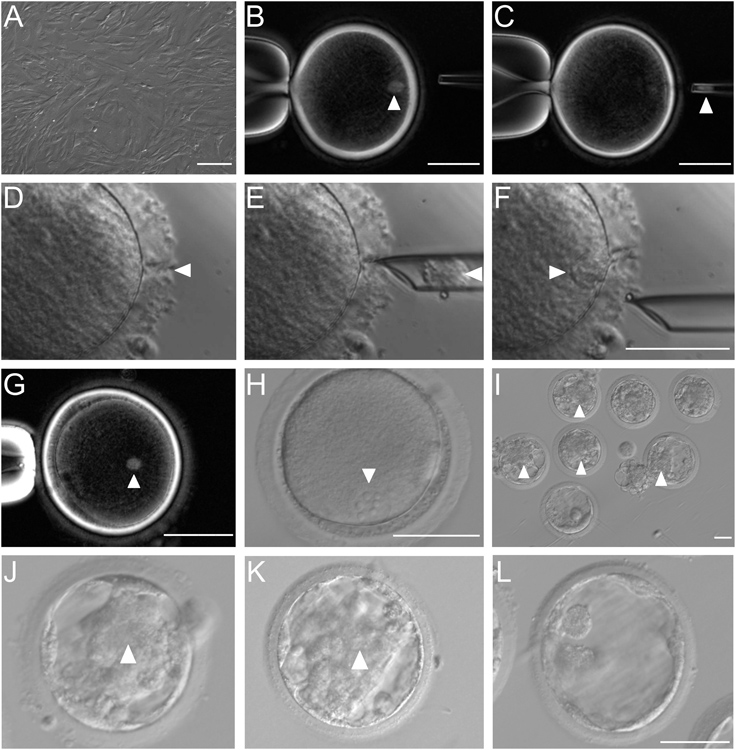
26th January 2018 Monkeys cloned in China Scientists in China report the creation of two monkey clones, named Zhong Zhong and Hua Hua, using the complex DNA transfer method that produced Dolly the sheep, for the first time.
The first primate clones made by somatic cell nuclear transfer have been announced. They are two genetically identical long-tailed macaques born recently at the Chinese Academy of Sciences Institute of Neuroscience in Shanghai. Researchers have named the newborns Zhong Zhong and Hua Hua – born eight and six weeks ago, respectively. This milestone in science, presented in the journal Cell, makes it a realistic possibility for labs to conduct research with customisable populations of genetically uniform monkeys. "There are a lot of questions about primate biology that can be studied by having this additional model," says senior author Qiang Sun, Director of the Nonhuman Primate Research Facility at the Chinese Academy of Sciences. "You can produce cloned monkeys with the same genetic background except the gene you manipulated. This will generate real models not just for genetically-based brain diseases – but also cancer, immune, or metabolic disorders and allow us to test the efficacy of drugs for these conditions before clinical use." Zhong Zhong and Hua Hua are not the first primate clones – that title goes to Tetra, a rhesus monkey born in October 1999 through a simpler method known as embryo splitting. This process is how twins arise naturally, but it can only generate up to four offspring at a time. By contrast, Zhong Zhong and Hua Hua are the product of a more advanced technique, called somatic cell nuclear transfer (SCNT), used to create Dolly the sheep in 1996, in which scientists remove the nucleus from an egg cell and replace it with another nucleus from differentiated body cells. This reconstructed egg then develops into an identical clone of whatever donated the replacement nucleus.
Differentiated monkey cell nuclei, compared to other mammals such as mice or cows, have proven resistant to SCNT. Sun and his colleagues overcame this challenge primarily by introducing epigenetic modulators after the nuclear transfer that switch on or off the genes that are inhibiting embryo development. The researchers found their success rate increased by transferring nuclei taken from fetal differentiated cells, such as fibroblasts, a cell type in the connective tissue. Zhong Zhong and Hua Hua are clones of the same macaque fetal fibroblasts. Adult donor cells were also used, but those clones only lived for a few hours. "We tried several different methods, but only one worked," says Sun. "There was much failure before we found a way to successfully clone a monkey." First author of the study, Zhen Liu, spent three years practicing and optimising the SCNT procedure. He tested various methods to quickly and precisely remove the nuclear materials from the egg cell and promote the fusion of the nucleus-donor cell and enucleated egg. With the additional help of epigenetic modulators that re-activate the suppressed genes in the differentiated nucleus, he was able to achieve much higher rates of normal embryo development and pregnancy in the surrogate female monkeys. "The SCNT procedure is rather delicate, so the faster you do it, the less damage to the egg you have," the researchers say. "The optimisation of transfer procedure greatly helped us to achieve this success." The team plans to continue improving the technique, which will also benefit from future work in other labs, and monitoring Zhong Zhong and Hua Hua for their physical and intellectual development. The babies are currently bottle-fed and are growing normally compared to monkeys their age. The group is also expecting more macaque clones to be born over the coming months. "This paper really marks the beginning of a new era for biomedical research," said Xiong Zhi-Qi, who is studying brain disease at the institute, but was not involved in this work, in an interview with Nature. The lab is following strict international guidelines for animal research set by the US National Institutes of Health, but they encourage the scientific community to discuss what should or should not be acceptable practices when it comes to cloning of non-human primates: "We are very aware that future research anywhere in the world depends on scientists following very strict ethical standards." So, could humans be cloned in the near future? "We don’t think so," says Antonio Regalado, senior editor for biomedicine at MIT Technology Review. "It's far too risky and controversial – however tempting the idea of cloning a lost loved one might be. Instead, it’s likely that researchers will try to create cloned monkeys harbouring mutations that cause specific human disease, like muscular dystrophy or autism. That could give us a way to try to treat those diseases in animals similar to us."
Comments »
If you enjoyed this article, please consider sharing it:
|








